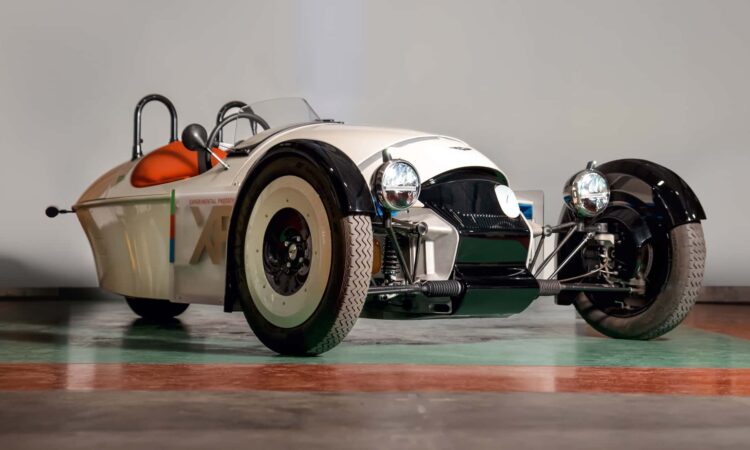From mainstream to niche, all automakers must adapt to the inevitable electric future because of increasingly stricter regulations. For car companies that have a long tradition of developing lightweight cars, embracing EVs is a tremendously challenging endeavor. Installing a battery pack and an electric motor typically adds a lot of weight compared to an equivalent car powered by a combustion engine.
Caterham showed that minimizing the weight penalty is doable with its Project V electric coupe. Now, another British marque is revealing what it has achieved so far in terms of a sporty, lightweight EV. Meet the Morgan XP-1, an experimental prototype with an all-electric heart. It’s based on the Ford-powered Super 3, but it has had its oily bits yanked off to make room for the new hardware. Fun fact – it uses Morgan’s first powertrain developed in-house, regardless of whether we’re talking about a combustion engine or an electric motor.
Morgan XP-1
To keep development costs low, the engineers mounted the electric motor in the existing transmission tunnel. It’s good for 134 horsepower (100 kilowatts) routed to that single rear wheel. The e-motor gets its juice from a tiny 33-kWh battery pack mounted under the hood where you’d normally expect to find the gasoline engine in the Super 3. Fully charged, the battery is good for approximately 150 miles (241 kilometers) of range.
Tipping the scales at less than 1,543 pounds (700 kilograms), the Morgan XP-1 is only about 132 lbs (60 kg) heavier than its gas counterpart. While the donor car has a drag coefficient of 0.65, the Cd has dropped to 0.42 after tweaking the underbody, wheels, and front fascia. These changes have lowered the drag coefficient by a third to maximize efficiency.
The Morgan XP-1 has been developed with four selectable driving modes that are hilariously illustrated on the digital driver’s display by chili symbols. To cope with the extra heft, the electric three-wheeler has been fitted with Nitron adjustable dampers while the spring rates have been changed. As for the battery, it supports fast charging, and it even has a bi-directional charging capability.
Morgan isn’t ready to talk about a potential production version, but Chief Technical Officer Matt Hole told Autocar it would cost “just north of Super 3.” The Ford-powered model retails for $53,938 in the United States where there are 12 showrooms.
Source: Read Full Article

